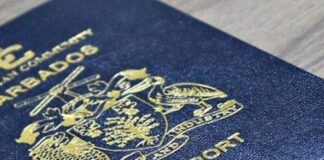By Felicia Persaud
News Americas, NEW YORK, NY, Fri. Aug., 17, 2012: Two months after U.S. Secretary of Homeland Security, Janet Napolitano, announced that certain people who came to the United States as children and meet other key guidelines may request, on a case-by-case basis, consideration of deferred action, the U.S. Citizenship and Immigration Services has begun accepting applications.
The USCIS finally opened up the application process on August 15th for the many young immigrant “dreamers,” anxious to become beneficiaries of the Obama administration’s version of the “DREAM” act.
To be considered for deferred action under this process, an immigrant must:
1. Have been under the age of 31 as of June 15, 2012;
2. Came to the United States before age 16;
3. Have continuously resided in the United States since June 15, 2007;
4. Were physically present in the United States on June 15, 2012, and at the time of making your request for consideration of deferred action with USCIS;
5. Entered without inspection before June 15, 2012, or your lawful immigration status expired as of June 15, 2012;
6. Are currently in school, have graduated or obtained a certificate of completion from high school, have obtained a general education development (GED) certificate, or are an honorably discharged veteran of the Coast Guard or Armed Forces of the United States; and
7. Have not been convicted of a felony, significant misdemeanor, three or more other misdemeanors, and do not otherwise pose a threat to national security or public safety.
Any immigrant, regardless of country of origin, who meets the qualifications, can submit an application.
Applicants must submit form I-821D, Consideration of Deferred Action for Childhood Arrivals along with Form I-765, Application for Employment Authorization, and Form I-765WS or work sheet. The total fee for forms I-821D, I-765 and the I-765WS is $465. This fee includes a $380 form fee for the I-765 and an $85 biometric services fee.
Each request for consideration of deferred action for childhood arrivals will be reviewed on an individual, case-by-case basis. USCIS may request more information or evidence from you, or request that you appear at a USCIS office. USCIS will notify you of its determination in writing.
Documentation to be submitted includes proof of identity – a passport, a birth certificate with photo identification, school or military ID with photo and any U.S. government immigration or other document bearing your name and photo; proof you came to U.S. before your 16th birthday, which includes passport with admission stamp, form I-94/I-95/I-94W, school records from the U.S. schools you have attended, any Immigration and Naturalization Service or DHS document stating your date of entry (Form I-862, Notice to Appear, travel records and hospital or medical records; proof of immigration status, Form I-94/I-95/I-94W with authorized stay expiration date, final order of exclusion, deportation, or removal issued as of June 15, 2012, charging document placing you into removal proceedings; proof of Presence in U.S. on June 15, 2012 and proof you continuously resided in U.S. since June 15, 2007.
This includes:
• Rent receipts or utility bills
• Employment records (pay stubs, W-2 Forms, etc)
• School records (letters, report cards, etc)
• Military records (Form DD-214 or NGB Form 22)
• Official records from a religious entity confirming participation in a religious ceremony
• Copies of money order receipts for money sent in or out of the country
• Passport entries
• Birth certificates of children born in the U.S.
• Dated bank transactions
• Automobile license receipts or registration
• Deeds, mortgages, rental agreement contracts
• Tax receipts, insurance policies.
You also need to provide proof of your student status at the time of requesting consideration of deferred action for childhood arrivals, including school records (transcripts, report cards, etc) from the school that you are currently attending in the United States showing the name (s) of the school (s) and periods of school attendance and the current educational or grade level, U.S. high school diploma or certificate of completion and the U.S. GED certificate.
And proof you are an honorably discharged veteran of the U.S. Armed Forces or the U.S. Coast Guard such as Form DD-214, Certificate of Release or Discharge from Active Duty; NGB Form 22, National Guard Report of Separation and Record of Service; Military personnel records and Military health records.
When completing the forms, applicants will want to consult the detailed instructions for both Forms I-821D and I-765. In addition, applicants wanting to be notified by e-mail or text message that their forms have been accepted should also submit Form G-1145, E-Notification of Application/Petitioner Acceptance.
And make sure you avoid scammers. Dishonest practitioners may promise to provide you with faster services if you pay them a fee, but these folks are only trying to scam you and take your money, says the USCIS.
For more information, log on to uscis.gov to for the latest updates or for more information call the USCIS National Customer Service Center at 1-800-375-5283.
The writer is founder of NewsAmericasNow, CaribPR Wire and Hard Beat Communications.








